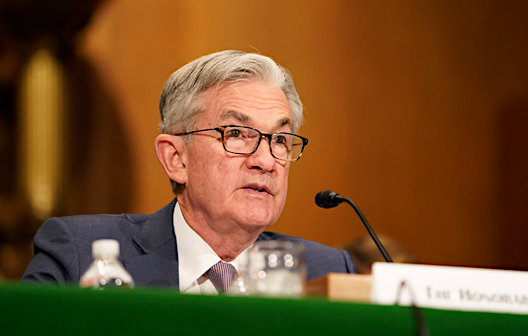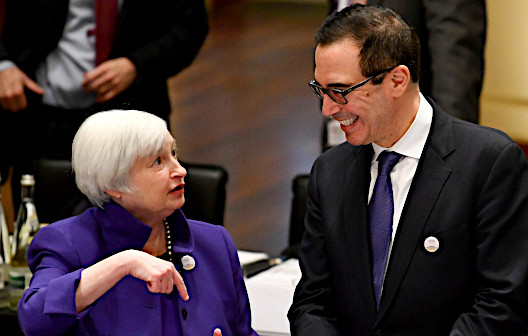
What to Expect from the Fed in 2021 – Bottom Line
“The economy is a long way from our employment and inflation goals, and it is likely to take some time for
substantial further progress to be achieved.”
The above quote, taken from yesterday’s comments by Federal Reserve Chairman Jerome Powell, may have been intended to calm fears that the Fed may be removing some of their intense market accommodation. Leading up to this meeting, there was also concerns of additional fiscal stimulus that was feared may fuel inflation pressures and a concomitant rise in rates. This would undermine a smooth recovery. The statement after the FOMC meeting went a long way in addressing those concerns.
Economics is a social science and is impacted greatly by the actions of the masses. If the masses are confident, then there is more upward economic activity. If the masses have concerns or doubts about the future, that very pessimism could undermine what could have been greater expansion. So, the Fed in its statements is inclined to be careful and put its more optimistic face forward. This is without regard to whether the economy is floundering or overheating. Their exuding confidence that they are in the driver’s seat and their “GPS” may show a need for some rerouting, but an expected “ETA” toward recovery is better than last projected, is what can be expected from any Fed statement.
New Economic Projections by the Fed
Most of the projections toward the Fed’s targets announced yesterday (March 17, 2021) were improved over the statements given in December. They now place their median estimate for 2021 Gross Domestic Product (GDP) at 6.5%, and 3.3% for 2022. This is significantly higher than the December forecasts of 4.2% and 3.2%. The Fed sees a reduction in unemployment and forecasts that it will reach 4.5%, the prior forecast was 5%. The unemployment rate for February was 6.2% as reported by the Department of Labor.
The inflation numbers the Fed targets are not the headline CPI-U (urban consumers) that we most often see reported or even the CPI-W (urban wage earners) that is used for COLA in many retirement plans and Social Security calculations. The Fed instead reviews Personal Consumption Expenditures inflation (see link in Sources). The Fed’s preferred price-growth gauge is projected to reach 2.4% in 2021, up from the previous 1.8% estimate. They anticipate inflation will then fall to 2% in 2022 and reach 2.1% the following year. In his post-meeting remarks, Fed Chairman Powell warned that the U.S. may experience higher than 2% inflation during 2021 but that any increases would taper next year.
Actions the Fed
Expects to Take
The short and the long of it is the Fed is not expected to raise rates before the end of 2023. As for the details, the FOMC is targeting maximum employment and inflation at the rate of 2 percent over the longer run. Inflation has been well below the 2% target. As a policy measure to achieve a long-term 2% rate of price increase, the Fed will aim for inflation moderately above 2 percent for some time so that inflation averages 2 percent over time. The goal is for longer-term inflation to be well anchored at 2%.
The Fed expects to maintain its accommodative (easy money) monetary policies until the Inflation goals are achieved and the economy nears full employment. The target range for the federal funds rate will be held at 0 to ¼%. They expect that this is the appropriate level until “labor market conditions have reached levels consistent with the Committee’s assessments of maximum employment and inflation has risen to 2 percent.”
Additionally, the Federal Reserve will continue to increase its holdings of Treasury securities by at least $80 billion per month and of agency mortgage-backed securities by at least $40 billion per month. The goal of these purchases is to support the flow of credit to households and businesses.
Take-Away
We all have a stake in the economy, investors, workers, home-buyers, business owners, retirees, everyone. Actions the Fed does and does not take impact all of our lives. The main role of the Fed is to maintain a sound banking system by using the tools of monetary policy to maintain stable prices and reach maximum employment. The two are often at odds with each other.
Actions taken during 2020 in response to a medical crisis had a severe impact on the economy, which leaves the Fed (among others) in unchartered waters. The Feds projections have improved dramatically since December and are likely to be revised again along with expected actions to achieve their goals.
As for the overall outcome of the FOMC meeting, the stock and bond markets got what they were looking for, the Fed doesn’t see inflation as a problem, and it expects it will continue its extreme accommodative stance. Home-buyers may not have to rush to beat a mortgage rate surge, business owners can feel confident that the Fed is working to improve conditions, workers can feel confident that they haven’t been forgotten, and retirees can breathe a sigh of relief that the Fed feels inflation is well under control.
Managing Editor, Channelchek
Suggested Reading:

|

|
| Should Stock Market Investors Worry About Inflation? | How Much is a Trillion? |

|

|
| The Correlation Between Stocks and Unemployment | Will Janet Yellen as U.S. Treasury Secretary be Good for Investors? |
Sources:
https://www.federalreserve.gov/monetarypolicy/files/fomcprojtabl20210317.pdf
https://www.federalreserve.gov/newsevents/pressreleases/monetary20210317a.htm
https://www.bls.gov/web/laus/lauhsthl.htm
https://inflationdata.com/Inflation/Inflation_Rate/CurrentInflation.asp?reloaded=true